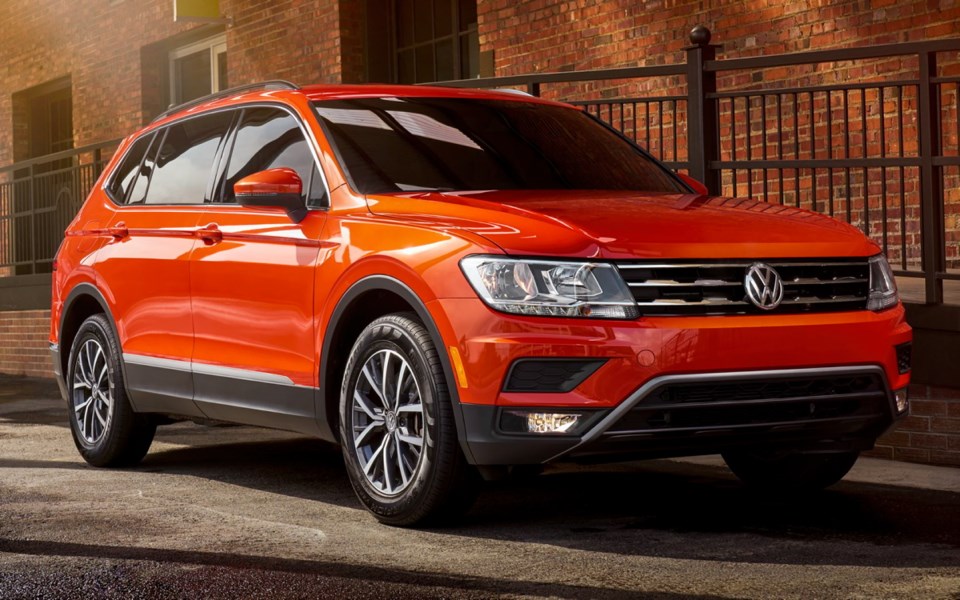The long wait is over for Volkswagen fans with the introduction of the second-generation 2018 Tiguan in the hot compact-SUV market segment.
The first generation of the Tiguan was in showrooms a long nine years, which is saying a lot about the model’s staying power against competitors that get an overhaul once every four or so years. In nine years, the German crossover only got a facelift in 2011.
It’s unfortunate that when finally it was the Tiguan’s turn to shine, Volkswagen introduced a larger bother, the Atlas, at about the same time. While the two don’t compete in the same segment, there will invariably be a few double takes in the next year or so because the two look similar.
Apart from the more than passing resemblance, the two also share the same DNA, as they are both spun off the same platform — Volkswagen’s Modular Transverse Matrix architecture.
The first advantage of this new platform is the wheelbase — it has gone from 2,604 millimetres to 2,790. This additional length means the Tiguan can be configured with third-row seating and seven-passenger capacity in certain configurations.
Its overall length has grown too, going from 4,427 to 4,701 mm. It has gone from one of the smaller compacts to one at the top of the segment, just a whisker longer than the Hyundai Santa Fe Sport.
Volkswagen says that the new model can now hold 58 per cent more cargo than before.
There are three trim lines and two- and all-wheel-drive models starting from $28,925 for a Trendline. I drove the top-of-the-line Highline, which starts at $39,175.
The main features the Highline possesses over lesser models include larger, 18-inch wheels and tires, LED headlights, leather seats and a Fender-branded audio system.
There is a turbocharged 2.0-litre four-cylinder engine under the hood producing 184 horsepower and 221 foot-pounds of torque. While the displacement of the engine is the same, there are some interesting differences between this and last year’s engine. The newer engine is 16 horses less powerful — but gains 14 lb.-ft. in torque. What this means is that there is more oomph at lower rpms but less power at the upper end for top speed — in theory.
In the real world, the 2018 didn’t feel appreciably faster than the model it replaces. A quick check on the specifications revealed the likely culprit — an increase in the curb weight (from 1,629 to 1,750 kg). Any extra power would be used to move the larger vehicle.
Due to the increase of weight, and no appreciable increase in power, the maximum rated towing capacity has fallen from 998 to 680 kilograms.
To Volkswagen’s credit, the new Tiguan hides the weight well, with a smooth acceleration to speed. Credit has to be given to the introduction of an eight-speed automatic transmission — two more than before. The powertrain power the front wheels most of the time, with power sent to the rear wheels when necessary.
Volkswagen’s 4Motion Active Control is a cut above the competition in the compact SUV segment. The driver can choose between Snow, On-Road and Custom off-road modes.
I had an opportunity to take the Tiguan on an off-road course with a few technical sections and it acquainted itself to the mud, tree roots and rocks with ease.
Back on terra firma, the Tiguan gave me a choice of running in Eco, Normal, Sport and Custom modes. At this price point, it is unusual to have such a cornucopia of driving choices — on and off the road.
The vehicle even allows for the storage of up to four driver profiles — from mirror settings or climate control to your favourite radio system. It also welcomes each one by name.
The only piece of equipment missing was steering-wheel paddle shifters, although you can shift manually with the gearshift.
The cockpit has undergone a significant upgrade as well. The Highline model features Volkswagen’s Digital Cockpit, with an electronic display taking the place of analog instruments, such as the speedometer and tachometer. It also allows the navigation system to display maps in the instrument cluster directly in front of the driver. The display is similar to the one found in recent Audis but the resolution isn’t as good as its cousin.
There is still an 8.0-inch screen housing the infotainment system on the centre console, with support for Apple CarPlay and Android Auto. The Fender audio system comes with eight speakers and a subwoofer.
Due to the increase in wheelbase, legroom is more generous in the rear. The rear seats feature a 40/20/40 split back, which is really handy if you are carrying passengers and long items, such as skis.
My tester did not come with the $750 third-row seating option.
The recent introduction of the Golf Alltrack, Atlas and now Tiguan means that Volkswagen, for the first time, has a modern, comprehensive line-up of SUV/crossovers models in its fleet. In the case of the Tiguan, it was well worth the wait — and not just for Volkswagen fans.
THE SPEC SHEET
Type: Compact two to three-row SUV/Crossover, front engine, all-wheel-drive
Engine: Turbocharged 2.0-litre four-cylinder engine, 184 hp at 4,400 r.p.m., 221 lb.-ft. of torque at 1,600 r.p.m.
Transmission: Eight speed automatic
Dimensions (mm): Length, 4,701; width, 1,839; height, 1,658; wheelbase, 2,790
Curb weight (kg): 1,750
Price (base/as tested): $39,175/ $42,590 (includes $1,845 freight and PDI and $100 AC tax)
Options: Driver assistance package $1,470
Tires: 235/55 R18 on alloy wheels
Fuel type: Regular
Fuel economy (L/100km): 11.3 city/ 8.8 highway
Warranty: Four years/80,000 km new car, five years/100,000 km powertrain



